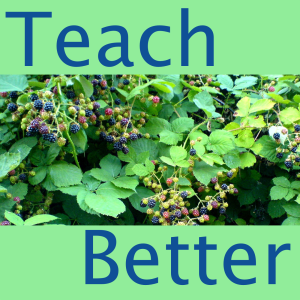
Podcast #62: Reinventing Science Labs with Natasha Holmes
 2017-09-12
2017-09-12
Our guest is Natasha Holmes, an Assistant Professor in the Cornell Physics Department who specializes in physics education research. For the last several years, Natasha has been figuring out ways to increase the amount students learn in science labs. While some students find traditional lab courses to be transformative experiences, many more find them to be mindless recipe following exercises. In this episode, Natasha shares her experience with a new kind of science lab that gets students thinking critically, carefully, and creatively. We also talk about the value of doing educational research in our disciplines.
You can subscribe to the Teach Better Podcast through your favorite podcast app or simply subscribe through iTunes if you don’t have one yet.
Show Notes0:00 ⏯ Intro
0:34 ⏯ Welcoming Natasha Holmes. Studying at UBC, Stanford, and with Carl Wieman. Children of educators going into education.
3:35 ⏯ Switching from particle physics to physics education. “I hated my undergraduate labs….I…should figure out how to make them better.” At first, Carl Wieman didn’t think it was a good idea. Challenge accepted.
6:45 ⏯ “My introductory physics labs were _______.” Science labs can be about cleaning test tubes. It’s hands-on, but it’s not minds-on. Some analogies for humanities professors.
10:33 ⏯ Helping students find their own insight. The a-ha moment doesn’t come out of the traditional lab. Re-focusing on the process rather than the product. Practicing hypothesis-testing.
14:00 ⏯ “It’s not a rote activity, and it’s not a linear process.” With a Nobel Prize at the end. Giving a more realistic image of the research process–and including failure. Using the lab to promote a growth mindset. Improving vs. achieving.
16:45 ⏯ An exemplary re-thought lab: the period of a pendulum. Learning how to reduce uncertainty and collect better data. ‘Design an experiment to test why your data isn’t better.’ Using the language of critical thinking.
22:36 ⏯ How do you measure critical thinking? “Everything we do starts getting very meta- very quickly.” Coding lab reports for reflecting and interpreting, for instance. Tripling indications of critical thinking. Looking at lab behaviors, discussions–and learning transfer. At UBC, students were taking these behaviors into their second-year physics courses. Doug’s “HBR Effect” persists longer than he’d like.
29:30 ⏯ Transferring change to other faculty. Students demanding change. Trying the same techniques in Chemical Engineering at Stanford. Iterating when you’re growing biological samples. The trade-off between active learning and “content.”
34:28 ⏯ The benefits of discipline-based educational research. Uusing the techniques of your discipline to understand teaching and learning in that discipline. How is understanding cosmic background microwave radiation help in educational research? The importance of bridging disciplines, too.
39:48 ⏯ Examples with varied surface features help learners construct better mental models. Analysis, hypothesis-testing, and design fit together in a naturalistic sequence. Evidence-based research takes time–so partnering with researchers makes sense. Technology can also help bring faculty together to collaborate.
44:31 ⏯ Avoiding pushing your knowledge onto others. Work with people who are open-minded and eventually create social pressure. The challenges of using student evaluations to tweak your teaching.
49:42 ⏯ A notable failure: changing the lab in the second course of a sequence. Students can be more concerned about achieving or saving time than actually learning. The importance of managing and aligning student expectations.
54:53 ⏯ Thanks and signing off.
More Episodes
 2015-10-05
2015-10-05
Create your
podcast in
minutes
- Full-featured podcast site
- Unlimited storage and bandwidth
- Comprehensive podcast stats
- Distribute to Apple Podcasts, Spotify, and more
- Make money with your podcast
It is Free
- Privacy Policy
- Cookie Policy
- Terms of Use
- Consent Preferences
- Copyright © 2015-2024 Podbean.com




